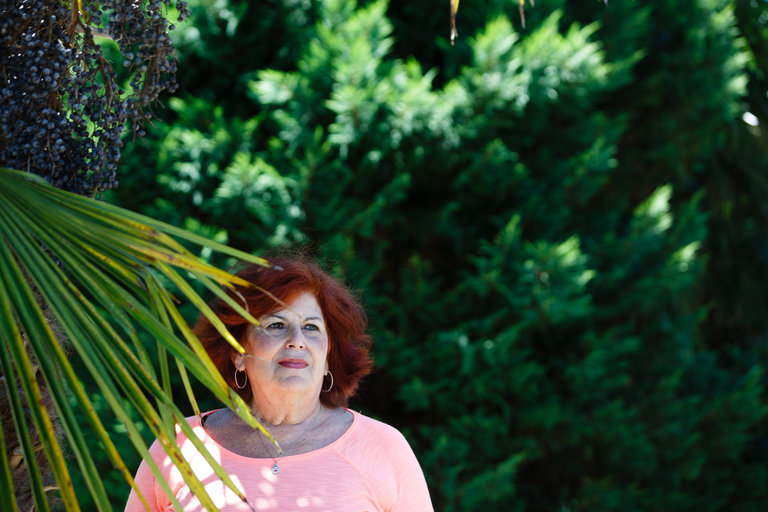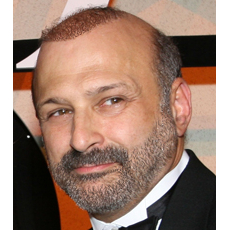
Drug addiction is not restricted to the young. Donna Weber, now 53, turned to painkillers after undergoing simple surgery. Then a long, tortured path to divorce made her anxious and depressed. Soon, she found herself on a candy-colored pill roller coaster.
Unlike street drugs, the pharmaceutical pills were easy to obtain legally. She got them from emergency rooms, dentists, psychiatrists, even plastic surgeons. “I went to doctors with exaggerated truths,” explained Ms. Weber, who once had four doctors. “I said I hurt more and more.”
But constant pill popping took a huge toll. A few years ago, she could barely get out of her bedroom. Sometimes she woke up and felt like she couldn’t breathe. Last year, she began contemplating suicide.
She finally called an addiction hotline and ended up taking a plane from her home in Colorado to a treatment center in Southern California.
“I didn’t think I was addicted,” said Ms. Weber, who is now drug-free and living in Los Angeles. “But sometimes the pain pills are causing the pain, not the injuries. So you take more. I was naïve.”
The death of Prince in April from an accidental overdose of pain pills has brought new attention to opioid addiction. It has also highlighted the extent of prescription drug abuse among older adults, particularly those with plenty of money to spend. Access to multiple doctors, many helping hands and lots of financial wherewithal can help cloak the warning signs of addiction, experts say.
“They’ve built a fortress around themselves,” said Joseph Garbely, medical director of Caron Treatment Centers. “Their resources allow them to advance in their addiction without detection. So the addiction progresses.”
More older adults are becoming addicted to powerful pain pills like OxyContin and Percocet to drown out the aches and pains of aging. Women may end up becoming dependent on pain relievers more quickly than men, according to the Centers for Disease Control and Prevention, and their overdoses have been rising rapidly.
As prosperous baby boomers age, their prescription drug use is increasing, too, said Indra Cidambi, medical director at the Center for Network Therapy, an outpatient detox facility in Middlesex, N.J. It is mostly pain pills, Xanax and Valium, she said. But though wealth provides many boomers with financial freedom, she explained, retirement often gives them anxiety, too.
Addiction can begin with a simple request for something to stop back pain, she said. But even starting on low doses of opioids can quickly turn into abuse. Why? There are two factors for aging adults: drug tolerance that builds with time, and the body’s slowing metabolism, which gives drugs a bigger effect.
“By 10 days of usage, you can be addicted,” Dr. Cidambi said. “You don’t think of affluent, well-put-together women as addicts. But I see this happening constantly. It’s out of the box.”
Caregivers and doctors rarely notice the problem at its early stages. “Few doctors screen for addiction,” said R. Corey Waller, an addiction, pain and emergency medicine specialist and senior medical director for education and policy at the Camden Coalition of Healthcare Providers in New Jersey. “It’s not built into treatment yet, and adding that step takes lots of time. Also, patients are usually offended when asked.”
So an addiction is often discovered only after a bad fall, confusion or even an accidental overdose, Dr. Garbely said. And even then it can sometimes be difficult to detect since signs of addiction can often be dismissed as symptoms of aging, such as confusion, shaky hands and mood swings.
Dr. Garbely remembers one wealthy woman whose addiction was masked. She lived on a huge estate and had many staff members who cared for her. They continued buying alcohol and prescription drugs for her even though her memory was fading.
“Her helpers were bathing her, changing her clothes and enabling her,” he said. “Substances take their toll.”
Finally, her son, who discovered her in horrible condition, broke through her human fortress. And the woman was checked into a Caron center’s senior unit for three months. “Her cognition was fully restored,” Dr. Garbely said. “It brought tears to my eyes.”
Affluent people often don’t seek treatment, said Richard Taite, chief executive of the luxury drug rehab center Cliffside Malibu in California and one of the authors of “Ending Addiction for Good.” They are used to getting what they want, he said, and may even go to multiple pharmacies and doctors. And they don’t understand their addiction.
The loss of self-worth that sometimes comes with retirement, especially after a lifetime of achievement and accolades, can be the spark. Moreover, addiction thrives on a lack of structure and accountability, explained Brenda J. Iliff, executive director of Hazelden Betty Ford Foundation in Naples, Fla.
A lot of baby boomers are now retired, anxious and have trouble sleeping. Add in arthritis, multiple prescription drugs and more drinks, and that can be the beginning of addiction. “It’s the perfect storm,” she said.
One wealthy woman, said Ms. Iliff, even jumped on her private jet and went from town to town to pick up her pain pills and other medications. “You can have a fresh prescription record in some states,” she said, “or hire a doctor who will accommodate you.”
Carol Waldman, 64, became addicted to Xanax, which was prescribed by a psychiatrist, and pain pills for chronic back and knee problems. “An aspirin never helped me because my resistance is high,” she said. “But I knew a Percocet would.” She didn’t think the pain pills were addictive and even took some of her husband’s.
Then last August, she ended up in bed a lot and endured a series of blackouts. “I was in a fog,” she remembered, and her husband was doing all the chores. After she dislocated her knee, an emergency room doctor told her family there was something wrong with her medications.
Soon after that, the intervention began. Her family came over for dinner; then the family rabbi rang the doorbell. “Everyone wanted me to get my life back,” she said. She ended up at a Caron center in the senior unit for 10 weeks.
Her detox took 20 days, and more than six months passed until her system was clear.
Detoxing older adults from prescription drugs is tricky. “They have to be monitored and slowly withdrawn,” Dr. Garbely said. “Opioid withdrawal won’t kill you, but you’ll wish you were dead.” For seniors, he added, treatment is also slower because there may be physical and cognitive issues, too.
“I’m a nice Jewish girl,” said Ms. Waldman, who lives in Atlanta. “And I had no idea about detox.”
Caron centers offer a chronic pain program, where seniors are taught nonnarcotic ways to treat pain. “Oftentimes, they need new doctors, too,” Dr. Garbely said. “If they prescribe dangerous medications, we’ll find someone else.”
As for Ms. Weber in Los Angeles, she said she is now building healthier relationships and her self-esteem. “It took work and creativity to get my prescription drugs,” she said. “Now I put work into being clean and sober.”

